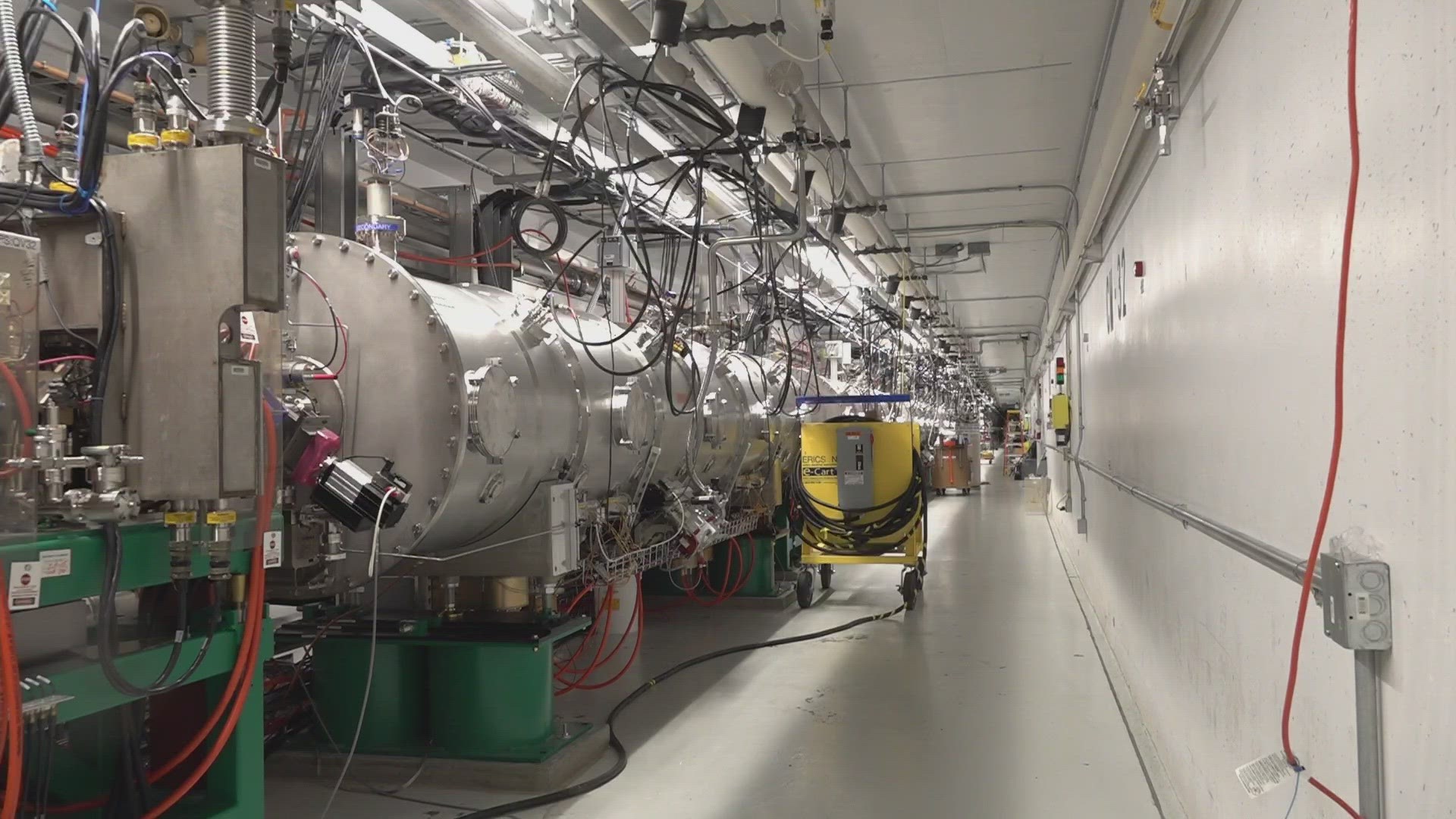OAK RIDGE, Tenn. — Examining the smallest parts of the universe often takes the biggest kinds of equipment. At Oak Ridge National Laboratory, a unique piece of equipment the size of a building is helping researchers from across the world analyze the world's smallest details.
It's named the Spallation Neutron Source. Kiersten Ruisard, an accelerator physicist at ORNL, said it's the most powerful proton beam in the world.
"There's similar facilities. But right now, we lead in power and we're going to keep it that way," he said.
The SNS produces neutrons that chemists, biologists, physicists and materials scientists need to analyze different kinds of objects. Neutrons can be produced when protons collide with each other at enormous speeds, throwing electrons off their atomic structure.
As a result, neutrons have no electric charge — unlike protons or electrons. Since they have no electric charge, but still have the regular magnetic properties most objects have, they can be used to examine the atomic structure of different materials at scales that other instruments can not achieve.
"I think of it somewhere as a combination between a microscope and an X-ray. You're looking at small things, you're looking inside of those things. And more neutrons just means you can see everything better," said Ruisard.
The SNS sends protons through large tubes at almost the speed of light, in pulses 60 times a second, aimed at a steel target filled with liquid mercury. The process is called spallation, and it results in around 20 neutrons per interaction. Those neutrons are then directed toward different instruments that give researchers advanced capabilities to analyze different systems and materials.
The SNS usually runs for around 4,500 hours per year, bringing different scientists together for many kinds of experiments. One of those scientists is Hassina Bilheux, who has worked at ORNL for more than 20 years. Her work includes experiments meant to extend the life of lithium batteries or improve 3D printing.
"You can go inside and see if you see defects, such as cracks or other problems that have appeared while you were 3D printing the object, layer by layer," she said.
She is also working to improve the SNS, and named a new kind of instrument that will take neutrons and uses them to analyze different materials. It's named VENUS.
"I got to name VENUS several years ago when it was just an idea in my head," she said.
Its full name is the Versatile Neutron Imaging Instrument. When construction on it is finished, it will be used to advance research in energy materials and processes, materials science, additive manufacturing, mechanical and physical behavior, geosciences and petroleum applications, transportation research, building technologies, plant physiology, biology, archeology, and a range of other areas.
It's designed to be as versatile as possible and was designed to be fully optimized for the SNS.
"What VENUS is designed to do is look at these objects, but instead of having a CAT scan of the object, we can look at the stresses. So, we can start looking at the properties of an object as it's being exposed to temperature or pressure and understand at the atomic level how the material is behaving," said Bilheux.
The SNS is shut down right now but is expected to fire back up on Wednesday. It takes around three weeks to fully ramp back up before scientists can get back to their experiments.
"I mean, who gets to do this, right? This is such a cool job. Who gets to come in and think about accelerated beams and particles and these types of highly specialized technologies? So, that's a really cool thing about working here," said Ruisard.

